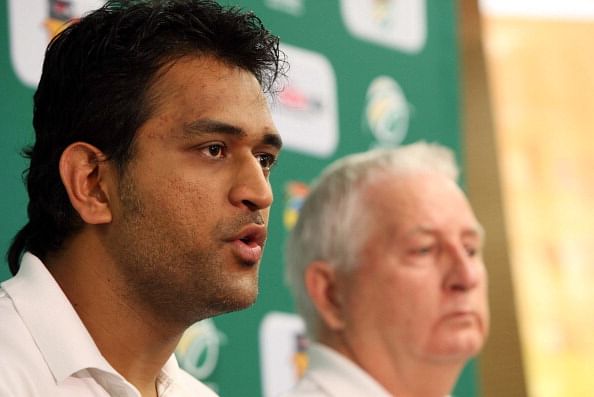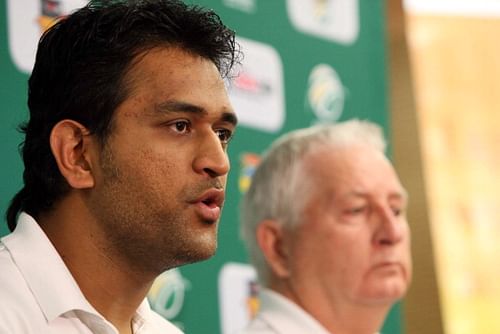
England v India 2014: The twin losses - Rule or an aberration?

After yesterday's humiliating loss against England, which was also one of the lowest scores recorded by a winning team to achieve an innings victory, it makes one wonder: Are we really on the downslide? Are Virat Kohli and Cheteshwar Pujara as good as they were hailed to be or as bad as the critics currently say? Is our bowling worse than any other top 8 team in the world? But, most importantly, where is the future of our cricket heading to?
MS Dhoni, more often than not, talks about the process and how it is more important that the result. Though a certain set of people may view this as an excuse, some do believe that the process is important. If you get your process right, the results simply have to follow.
There are two tendencies, unfortunately, that an average Indian fan inadvertently has: to be either result oriented or to forget the past too soon. Barring the Tests at Ageas Bowl and Old Trafford, let us compare the results between the before-revamp and the new look Indian side, to get a better understanding of where we are at now. The first Test series after Sachin Tendulkar’s retirement was the one in South Africa, followed by a tour to New Zealand. Let us take a look at the players who got a game in the humiliating 4-0 loss to England in 2011 and the ones in New Zealand and South Africa.
| India in England 2011 | India in South Africa & New Zealand 2013 |
|---|---|
| A Mukund | M Vijay |
| R Dravid | S Dhawan |
| S Tendulkar | C Pujara |
| VVS Laxman | V Kohli |
| S Raina | RG Sharma |
| MS Dhoni (c) | A Rahane |
| Harbhajan Singh | MS Dhoni (c) |
| P Kumar | R Ashwin |
| Z Khan | Z Khan |
| Ishant Sharma | I Sharma |
| V Sehwag | M Shami |
| Amit Mishra | R Jadeja |
| S Sreesanth | |
| Y Singh | |
| R P Singh |
With Zak being sidelined after getting injured midway through the first Test in 2011 and then sent to the wilderness, is it not striking that in a matter of just 2-2.5 years, Dhoni and Ishant Sharma are the only two players common to both the series? This makes it pretty evident that the team has undergone a major overhaul. But has that been for the better or the worse? Here are some more facts to ponder upon:
Results are obviously a major judging factor. But, instead of solely judging by results, let us compare the margins of these results.
Results in England 2011
1st Test at Lords: England won by 196 runs
2nd Test at Trent Bridge: England won by 319 runs
3rd Test at Edgbaston: England won by an innings and 242 runs
4th Test at the Oval: England won by an innings and 8 runs
Results in Australia 2011
1st Test at the MCG: Australia won by 122 runs
2nd Test at Sydney: Australia won by an innings and 68 runs
3rd Test at Perth: Australia won by an innings and 37 runs
4th Test at Adelaide: Australia won by 298 runs
Results before the 3rd and 4th Tests of the Investec Test Series abroad after Tendulkar’s retirement
1st test against South Africa at Johannesburg: Match Drawn
2nd Test at Durban: SA won by 10 wickets
1st Test against New Zealand at Wellington: New Zealand won by 40 runs
2nd Test at the Basin Reserve: Match Drawn
1st Test against England at Nottingham: Match Drawn
2nd Test at Lords: India won by 95 runs
Margin of defeats – an indicator of team’s progress
It is pretty evident from this comparison that the margin of defeat grew slimmer and slimmer since the overhaul, eventually leading to an overseas victory at the ‘Mecca of Cricket’. Though it shows that we lost against South Africa by 10 wickets, we were 68/2 at the end of day 4 and a single bad session cost us that match, which ended in the Post Tea session of the 5th day. If one asks whether the margin of defeats getting narrower is a coincidence, the answer is a resounding ‘no’. It reiterates just one simple fact: Team India’s future is not only secure but also on the right path.
If one compares player to player, then barring the great Rahul Dravid, all other Indian batsmen – Sachin Tendulkar, Virender Sehwag, Gautam Gambhir, VVS Laxman, Suresh Raina, Yuvraj Singh – average between 20-35 in their last 12 Tests. In comparison, the current top six – though too early to mean anything – average above 37 in their career, with none having played more than 25 Tests. The bowling has been better, too: we got South Africa out below 250, New Zealand for a paltry 105 and 192 and England for 223.
There have been talks of change in personnel in the playing eleven. There is a simple analogy to counter this: when a child is not doing well in his exams, his/her parents don’t throw him out of the house and get another from the foster home. They help him, breed him, and then , more often than not, it comes out as a finished product. Similarly, we cannot just keep chopping and changing our eleven. Instead, we have to recognize our best 15 and prepare them for the future.
The last two Tests are completely different to the story being told here. But the question is, are these two Tests the indication of the future, or the results since the 1st test in South Africa? A better sample will always lead to better conclusions. Before one decides whether these Tests are an aberration or the rule, remember that Rome was not built in a day, it took billions of drops to make the ocean and that Tendulkar got the first of his 49 ODI centuries in his 79th match.